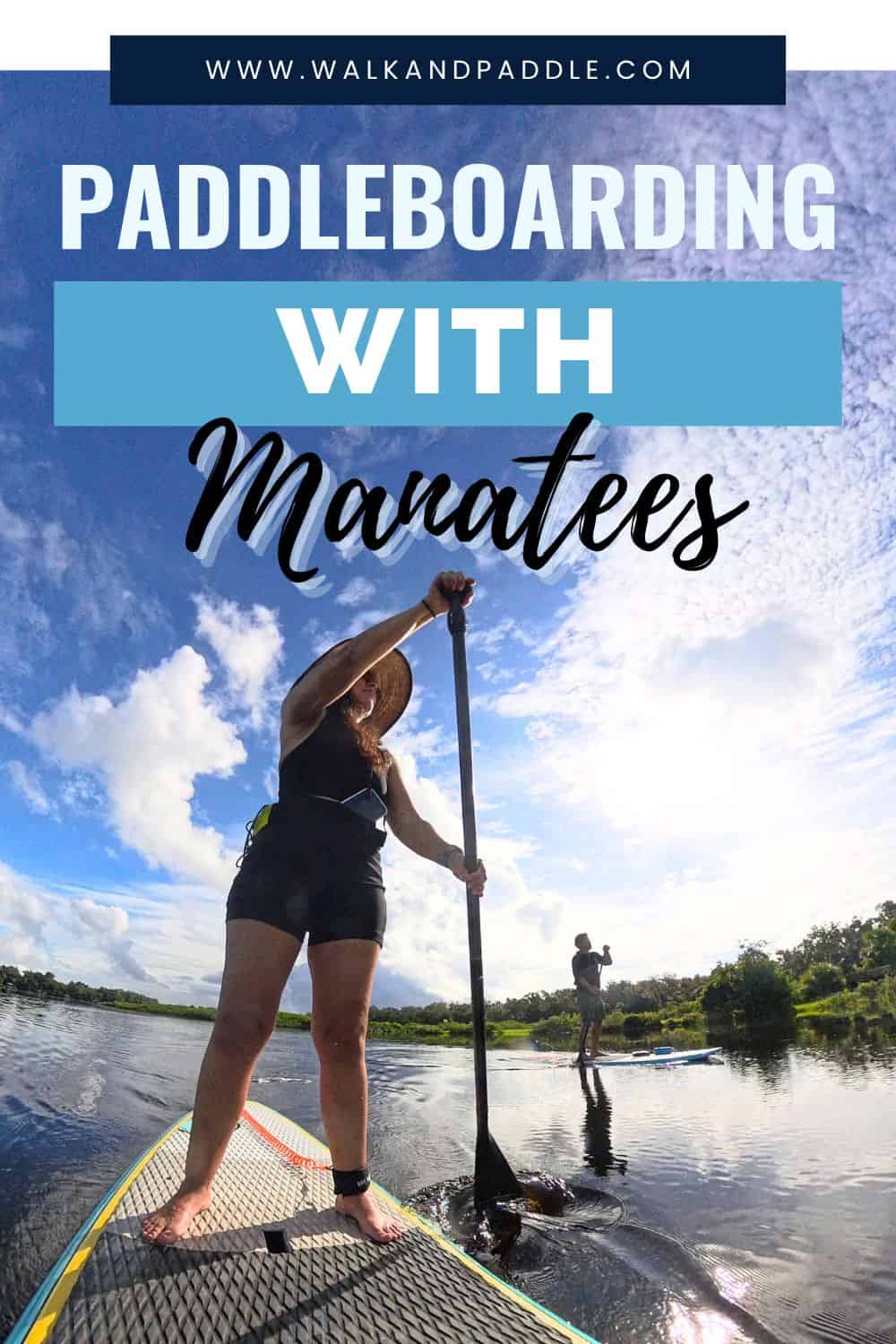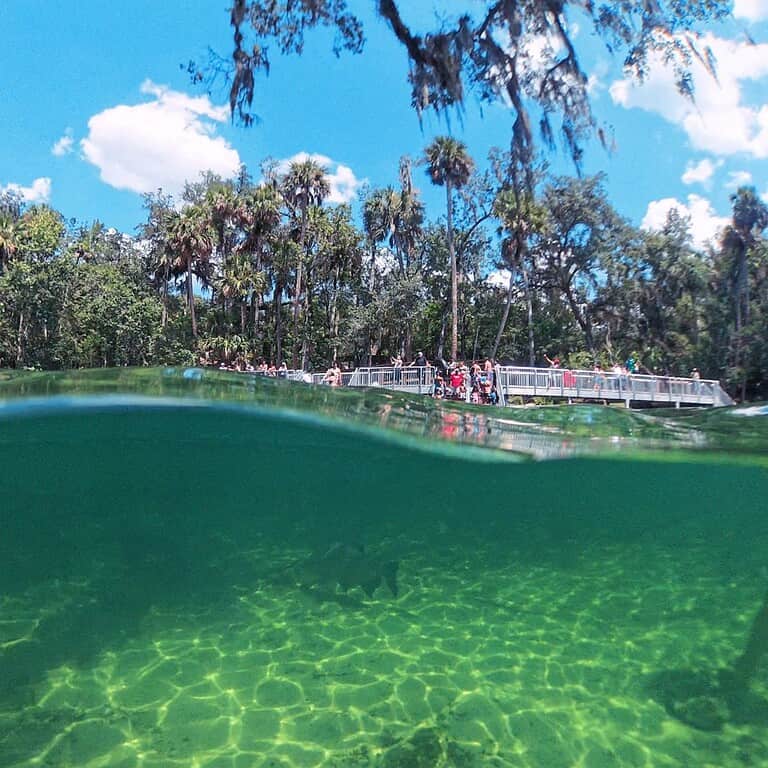Paddling Florida springs, rivers, and intracoastal waters typically means encountering manatees. During the summer, you are more likely to find them in the rivers and in brackish and salty waters. When the temperature begins to drop, usually between November 15th and March 31st, manatees begin spending their time in spring areas and other places where they can find water that is warmer than 68°F. And since you can paddleboard in Florida all year long, you need to know how to paddle responsibly with them.
Table of Contents
- Will Manatees Come Up to Your Paddleboard?
- What to Do If You See a Mom and Baby While Paddling
- Can a Manatee Knock You Off Your Paddleboard?
- How to Know If a Manatee Is in Distress
- Best Places to Paddle with Manatees
- Looking for more Manatee Content?
Will Manatees Come Up to Your Paddleboard?
Manatees are very curious, and they might just come over to your board and say hi. This is why we have to be so careful when we are out paddling. It’s one thing for them to come to you versus you going over to them.
The key is always to practice passive observation:
- No touching
- No feeding
- No giving them water
- No invading their space
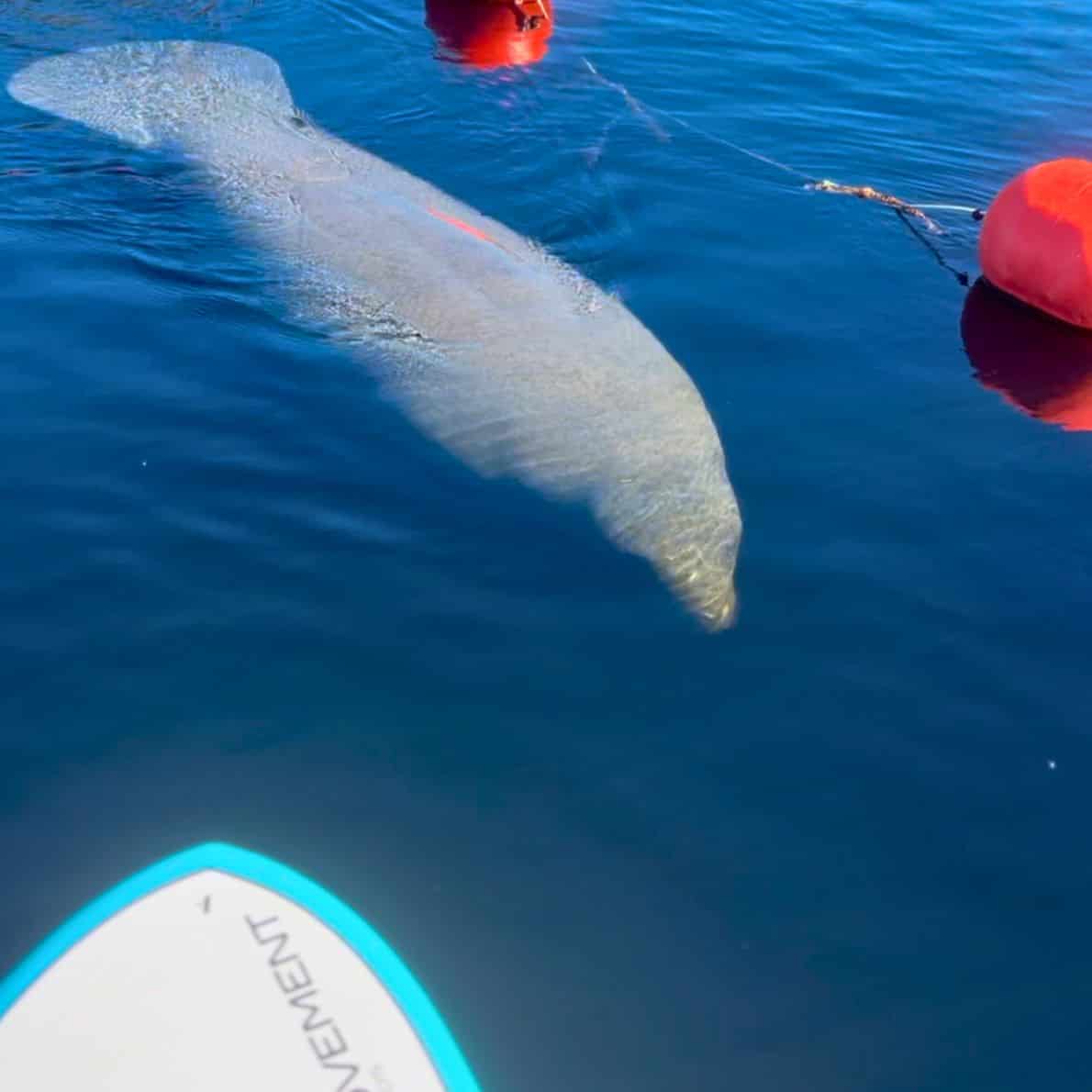
What to Do If You See a Mom and Baby While Paddling
There’s nothing sweeter than spotting a mama manatee and her calf. Manatee babies look so tiny compared to the adults. And sometimes you will see one that is basically a newborn. They are cute and energetic (at least compared to adults) and curious.
Definitely keep your distance. Observe them from afar. If a baby approaches you, make sure that you DO NOT separate the baby from its mother. Even if it comes to you, make sure your board isn’t between them.
If you see a baby alone (orphaned), call FWC’s Wildlife Alert Toll-Free Number: 1-888-404-FWCC (3922); press “7” to speak with an operator. Cellular phone customers: *FWC or #FWC. Never touch or try to rescue the orphan yourself.
Can a Manatee Knock You Off Your Paddleboard?
They most certainly can. This is especially true if it is a mating herd. You’ll know you are near one because you will see a group of manatees kind of drifting through the water. You’ll see a manatee snout, flipper, or tail randomly appear above the water. They might even look like they are rolling. Stay away from them, they are not paying attention to anything but their mating.
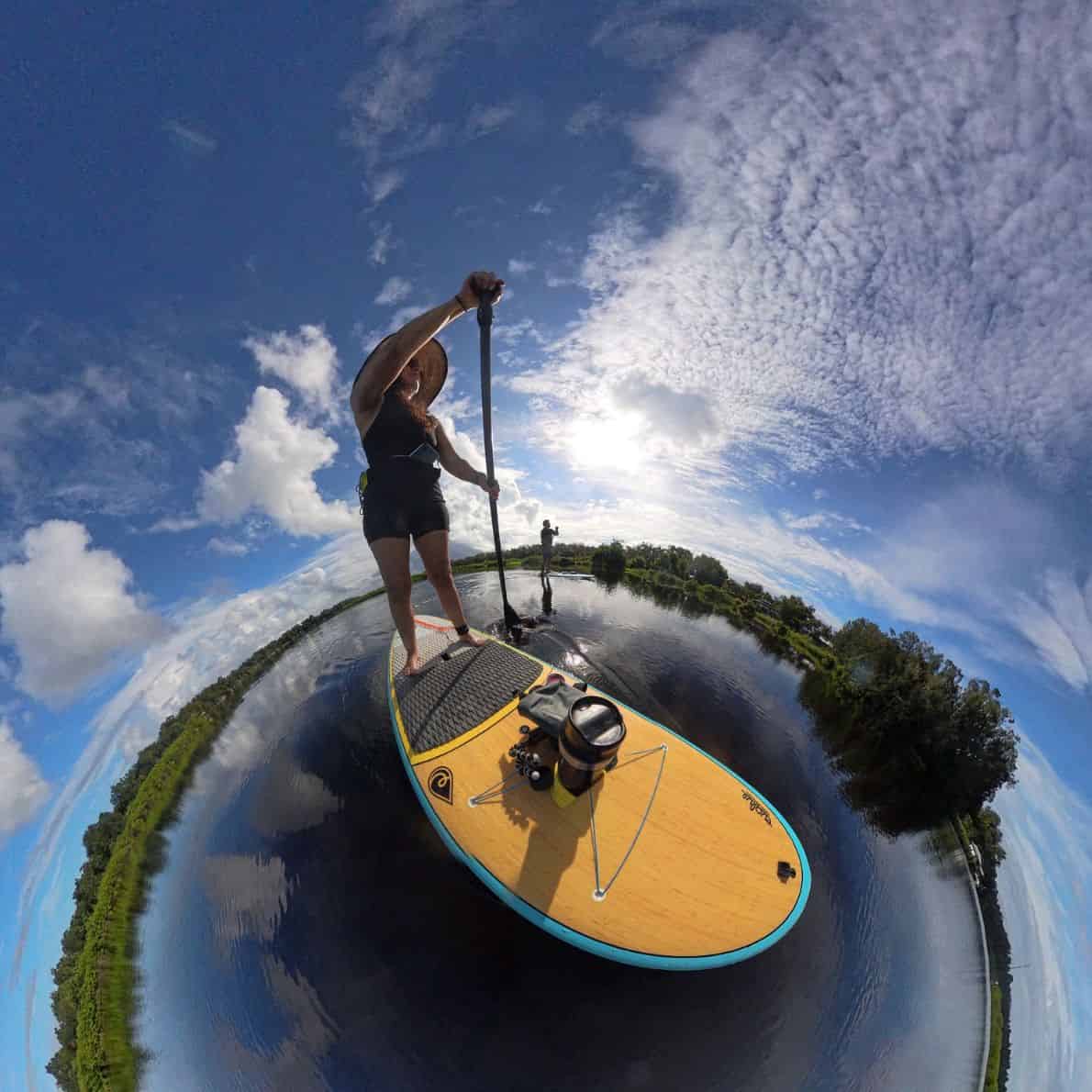
How to Know If a Manatee Is in Distress
While you are out paddleboarding, you might come across a distressed manatee. So let’s talk about the signs since it can be hard to know if a manatee is just resting with its back exposed or actually having a buoyancy issue. Or maybe you just don’t know what to look for.
Save the Manatees, a 501c3 organization founded by Jimmy Buffett and former U.S. Senator Bob Graham, has a list to help you identify a manatee that is in trouble.
Signs of distress in a manatee:
- Fresh-looking wounds or raw pink/red spots
- Thin body with ribs or skull showing, white patches or sores, and low energy
- Breathing much faster than normal (about once every minute)
- Stranded by the tide (don’t try to push it back into the water yourself)
- Floating high in the water and unable to swim down
- A calf under five feet long that’s alone with no mom nearby
- Any sign of fishing line, rope, or other entanglement
If you see a manatee in distress, please report it to the Florida Fish and Wildlife Conservation Commission: 1-888-404-3922. Do not attempt to rescue the manatee yourself. Continue to maintain a respectful distance.
Best Places to Paddle with Manatees
Ok, now that we have gone over all the responsible stuff, let’s talk about where you can RESPONSIBLY paddle among the manatees.
I do recommend going with a guide whenever possible, especially one that has completed the Save the Manatees Guardian Guides Program. They will not only take you where the manatees are, but they will make sure that you are doing so in a way that minimizes human-manatee interactions.
Please remember that while manatees can be seen in these areas, they are wild animals and it is never guaranteed that you will see them during a paddle trip.
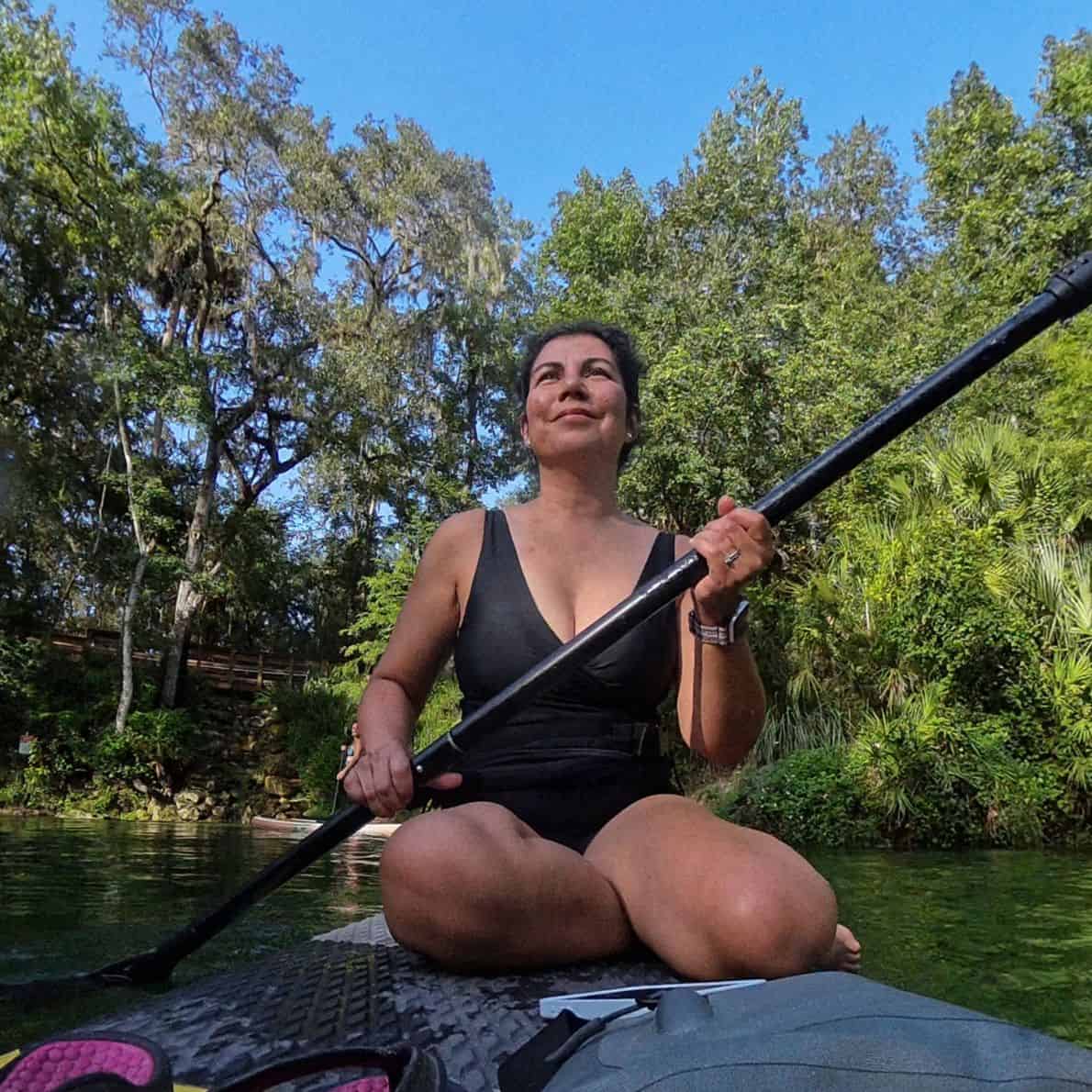
Crystal River
Crystal River (the river, not the city) is connected to the Gulf and has many springs along it. This means that manatees are often found in and around the river throughout the year. Your best chance of seeing manatees is near the springs during manatee season (Nov 15 to March 31).
As I’ve mentioned before, I can’t stress how important it is to have a guide when paddleboarding with manatees. It’s especially important in Crystal River because there are so many different springs along the river and locations have different rules about encountering manatees.
I really like Get Up and Go Kayaking. They are part of the Guardian Guides Program. They offer kayaking tours in Crystal River, Three Sisters Springs and The Chaz (30 minutes away from Crystal River).
Blue Spring State Park
Every winter, hundreds and hundreds of manatees gather at Blue Spring State Park in Orange City, Florida. It’s one of the best places to see a high number of manatees in one spot.
Paddling at Blue Spring during winter is a bit tricky though, as the spring run is completely closed to water activities. However, you can paddle The Lagoon and the St. Johns River and on warmer winter days, when the water temperature warms up, manatees will leave the spring run and venture out into these waters.
Unlike the spring run, the water in The Lagoon and the St. Johns River is dark, so you have to really look where you are paddling to make sure you are observing them from a distance. Look for their little faces when they come up for air.
You can find paddle routes in and around Blue Spring State Park here.
I’ve probably paddled the most here and I’ve seen manatees during manatee season and outside of it. This is where I saw my first ever mating herd. It was in The Lagoon in the middle of summer, and no matter how hard I tried to stay out their way, they ended up drifting my way. This is why we have to be the ones paying attention and keeping our distance.
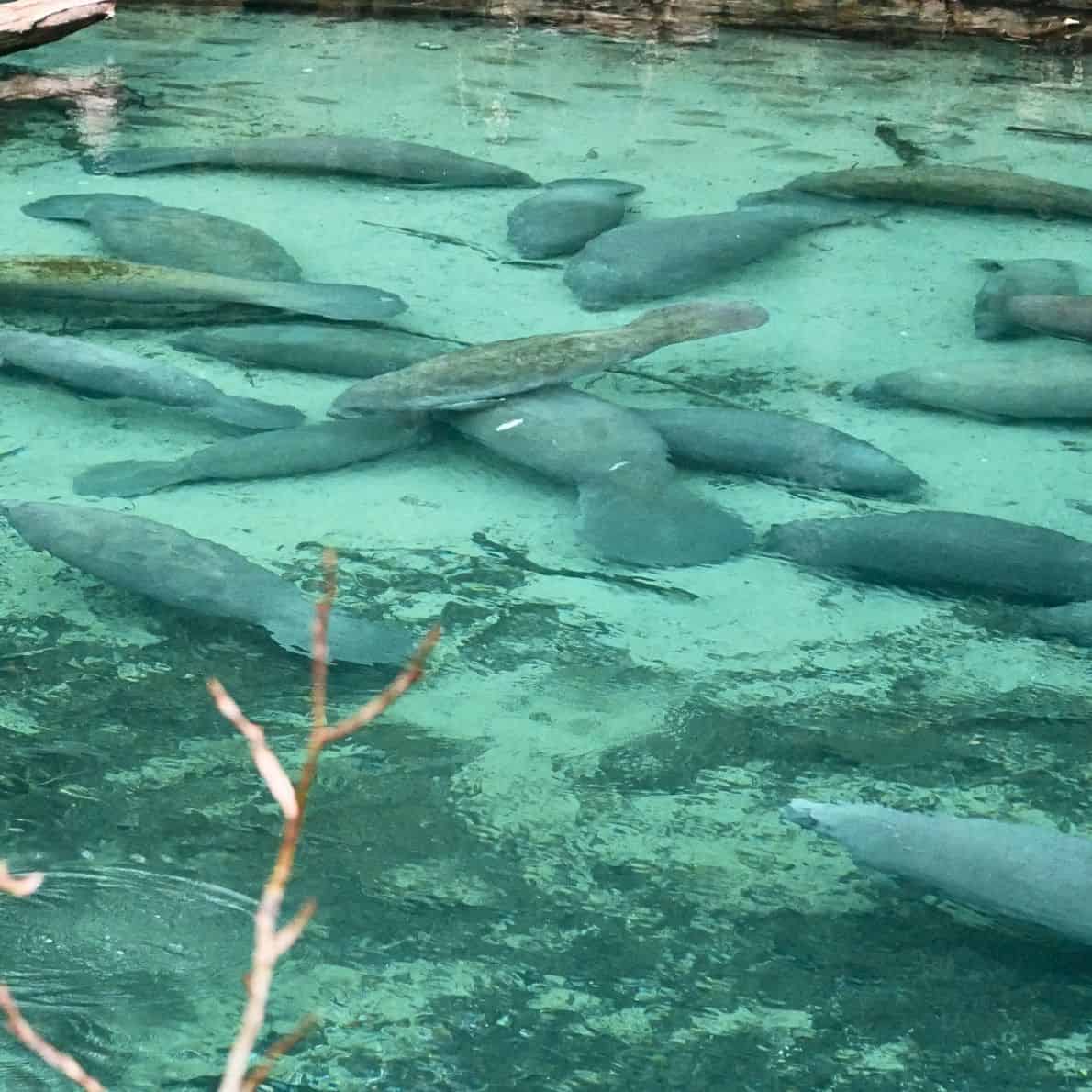
Silver Springs State Park
You can see manatees all year long at Silver Springs State Park, but you can see even more between Nov. 15 to March 31. Unlike Blue Spring State Park, the entire springs area is open to paddling even in the winter. There are more than 30 springs in the area that you can paddle, all along the Silver River.
Get Up and Go Kayaking rents kayaks here as well. So you know you will get a great tour and learn about manatees.
I’ve paddled here during manatee season and seen so many manatees. However, they were not all bunched up in one area, but all over the Silver River. This makes it easy for paddlers to keep their distance.
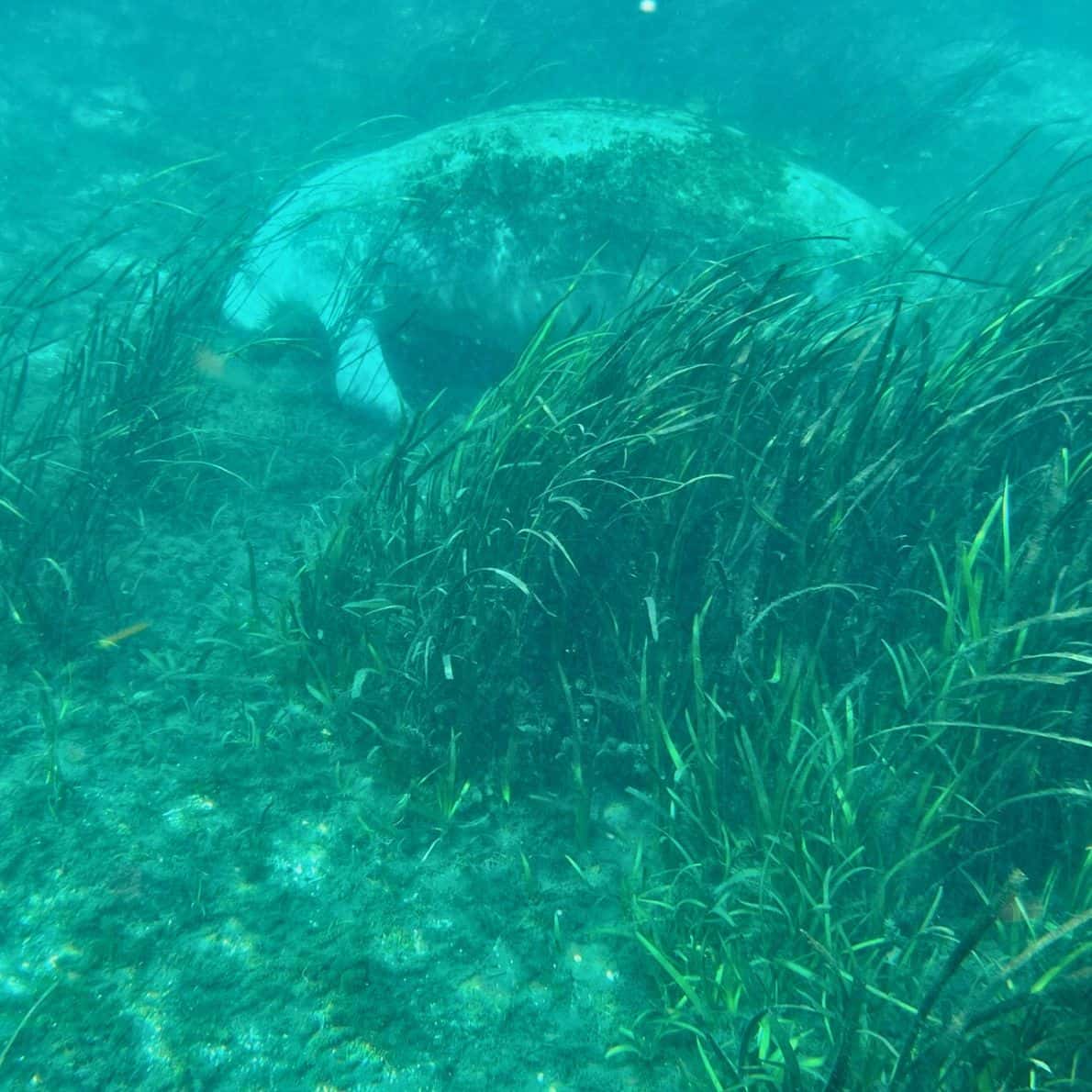
Looking for more Manatee Content?
I’ve got you covered! I love manatees, seeing them (responsibly), and sharing that information with you.
Here’s more about manatees on my blog:
- The Florida Manatee: A Guide for Visitors
- Visiting Florida: Best Places to See Manatees This Winter!
- Your Ultimate Guide to Swimming with Manatees in Florida!
